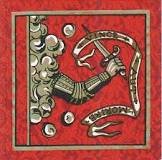[ad_1]
The 7th chapter of Nidanasthanam of Ashtanga Hridayam is named as Arshasam Nidanam Adhyayah. This chapter deals with the explanation of ‘diagnosis of hemorrhoids / piles’.
The topics covered in this chapter include –
– Arshas nirvachana – definition of arshas
– Bheda – types of piles
– Guda – rectum
– Sahaja Arshas – congenital piles
– Janmottara arshas – piles occurring after birth
– Nidana – causes of piles
– Purvarupa – premonitory symptoms of piles
– Samprapti – pathogenesis of piles
– Rupa – clinical features of piles
– Vataja, Pittaja, Kaphaja, Tridoshaja, Raktaja Arshas
– Udavarta nidanam – diagnosis of Udavarta
– Sadhyasadhyata – prognosis
– Anya sthana gata arshas – piles of other places
– Carmakila – warts
– Urgency to cure piles
Pledge by the author(s)
अथातोऽर्शसां निदानं व्याख्यास्याम ।
इति ह स्माहुरात्रेयादयो महर्षय: ।
After having offered prayers to the God, henceforth we are going to explain the chapter pertaining to the explanation of ‘diagnosis of piles / hemorrhoids’. Thus say (pledge) atreya and other sages.
Arsas Nirvacana: Definition
अरिवत्प्राणिनो मांसकीलका विशसन्ति यत् ।
अर्शांसि तस्मादुच्यन्ते गुदमार्गनिरोधतः ॥ १ ॥
दोषास्त्वङ्मांसमेदांसि सन्दूष्य विविधाकृतीन् ।
मांसाङ्कुरानपानादौ कुर्वन्त्यर्शांसि तान् जगुः ॥ २ ॥
Just as foes torment the person, similarly the sprouts of muscles (give troubles) by obstructing the passage of the rectum, hence it is called as Arsas. The Doshas, vitiating the skin, muscles and fat produce sprouts of muscles, of different shapes in the rectum etc, which are called as Arsas (piles)
Notes: The etymology of the term Arsas is ’Arivat’ like a foe ’Srnati’ gives trouble. The foe referred to here is not the one who resides far away but one who stays nearby and gives troubles frequently for a long time. Sprouts of muscles, skin or fat tissue, growing in the nose, ears, skin etc., are also called Arsas, but these are referred to along with the name of the organ concerned; the term Arsas, without such a name of the organ refers only to piles/haemorrhoids occurring in the rectum. These are actually, engorged veins and not sprouts of muscles, as described above.
Bheda: kinds
सहजन्मोत्तरोत्थानभेदाद्द्वेधा समासतः ।
शुष्कस्राविविभेदाच्च
Sahaja (congenital) and Janmottaraja (arising after birth) are its two kinds, in brief; also Suska (dry, non-exudative) and Sravi (exudative).
Guda: rectum
गुदः स्थूलान्त्रसंश्रयः ॥ ३ ॥
अर्धपञ्चाङ्गुलस्तस्मिंस्तिस्रोऽध्यर्धाङ्गुलाः स्थिताः ।
बल्यः प्रवाहिणी तासामन्तर्मध्ये विसर्जनी ॥ ४ ॥
बाह्या संवरणी तस्या गुदौष्ठो बहिरङ्गुले ।
यवाध्यर्धः प्रमाणेन रोमाण्यत्र ततः परम् ॥ ५ ॥
Guda (rectum) attached to the large intestine, is four and half Angulas (fingers breadth) long, in which, three folds, each of one and half Angula are located; of these, the Pravahini is situated inside, Visarjini in the middle and Samvarani at the outside; in its outer portion (of Samvarani) of one Angula (in depth) is the Gudostha (anal lip), of the length of one and a half Yava – Barley – Hordeum vulgare (barley); and after that, there are the hair.
Notes: In terms of modern measurement, the rectum or the terminal portion of the large intestine is 6½-7” in length. Pravahini is the fold which initiates the urge of defecation, Visarjini is that which expels the faeces and Samvarani is the sphincter which closes the orifice of the rectum. Pile masses develop in an area of about 3-4” from the exterior.
Sahaja Arshas (congenital piles)
तत्र हेतुः सहोत्थानां वलीबीजोपतप्तता ।
अर्शसां बीजतप्तिस्तु मातापित्रपचारतः ॥ ६ ॥
दैवाच्च ताभ्यां कोपो हि सन्निपातस्य तान्यतः ।
असाध्यान्येवमाख्याताः सर्वे रोगाः कुलोद्भवाः ॥ ७ ॥
The cause of Sahaja Arsas (congenital piles) is the abnormalities of Valibija (seed/genes which are responsible for the formation of the rectal folds), abnormalities of the seed are (due to) improper activities of the parents and Daiva (providence); their (of these two) aggravation is the cause for Sannipata (increase of all the Doshas together). Hence this kind (of Arsas) is described as incurable; similarly, are all the diseases which are Kulodbhava (familial/hereditary).
Sahaja Arshas (congenital piles)
सहजानि विशेषेण रूक्षदुर्दर्शनानि च ।
अन्तर्मुखानि पाण्डूनि दारुणोपद्रवाणि च ॥ ८ ॥
Sahaja Arsas (congenital piles) are especially dry, ugly to look at, facing inward, yellowish-white and accompanied with grave complications (secondary diseases).
Janmottaraja Arshas (piles occurring after birth)
षोढान्यानि पृथग्दोषसंसर्गनिचयास्रतः ।
The other kind is of six varieties; one from each Dosha separately, one from the combination of all and one from Asra (blood).
Janmottaraja Arshas (piles occurring after birth)
शुष्काणि वातश्लेष्मभ्यामार्द्राणि त्वस्रपित्ततः ॥ ९ ॥
Shushka (dry, non-exudative) are caused by Vata and Slesma (Kapha) and the Ardra (moist, exudative) by Asra (blood) and Pitta.
Nidana (causes)
दोषप्रकोपहेतुस्तु प्रागुक्तस्तेन सादिते ।
अग्नौ मलेऽतिनिचिते पुनश्चातिव्यवायतः ॥ १० ॥
यानसङ्क्षोभविषमकठिनोत्कटकासनात् ।
वस्तिनेत्राश्मलोष्टोर्वीतलचैलादिघट्टनात् ॥ ११ ॥
भृशं शीताम्बुसंस्पर्शात्प्रततातिप्रवाहणात् ।
वातमूत्रशकृद्वेगधारणात्तदुदीरणात् ॥ १२ ॥
ज्वरगुल्मातिसारामग्रहणीशोफपाण्डुभिः ।
कर्शनाद्विषमाभ्यश्च चेष्टाभ्यो योषितां पुनः ॥ १३ ॥
आमगर्भप्रपतनाद्गर्भवृद्धिप्रपीडनात् ।
ईदृशैश्चापरैर्वायुरपानः कुपितो मलम् ॥ १४ ॥
पायोर्वलीषु तं धत्ते तास्वभिष्यण्णमूर्तिषु ।
जायन्तेऽर्शांसि
The causes of aggravation of the Doshas have been enumerated previously (chapter. 1 of this section); they cause weakness of the fire (digestive activity) and accumulation of wastes, the feces (which lead to the production of piles). Further, indulging too much in copulation, riding, strain, sitting for long hours on uneven, hard seats and on one’s own heals, wound caused by enema nozzle, stones, bricks, rough surface of the ground, cloth etc., contact with very cold water, excess straining during defecation, suppression of urge of the flatus, urine, feces or premature initiation. Emaciation caused by fever, abdominal tumors, diarrhea, accumulation of Ama, (undigested material), disorders of duodenum, dropsy, and anemia. Indulging in improper activities like exertion, In women (excessive sex), due to abortion or miscarriage, and abnormalities of development of the foetus. By these and similar other causes, Apana Vata gets aggravated, withholds the accumulated faeces in the folds of the rectum. From such a hard and abrasive contact, piles arise.
Purvarupa (premonitory symptoms)
तत्पूर्वलक्षणं मन्दवह्निता ॥ १५ ॥
विष्टम्भः सक्थिसदनं पिण्डिकोद्वेष्टनं भ्रमः ।
सादोऽङ्गे नेत्रयोः शोफः शकृद्भेदोऽथवा ग्रहः ॥ १६ ॥
मारुतः प्रचुरो मूढः प्रायो नाभेरधश्चरन् ।
सरुक् सपरिकर्तश्च कृच्छ्रान्निर्गच्छति स्वनम् ॥ १७ ॥
अन्त्रकूजनमाटोपः क्षामतोद्गारभूरिता ।
प्रभूतं मूत्रमल्पा विडश्रद्धा धूमकोऽम्लकः ॥ १८ ॥
शिरःपृष्ठोरसां शूलमालस्यं भिन्नवर्णता ।
तन्द्रेन्द्रियाणां दौर्बल्यं क्रोधो दुःखोपचारता ॥ १९ ॥
आशङ्का ग्रहणीदोषपाण्डुगुल्मोदरेषु च ।
एतान्येव विवर्धन्ते जातेषु हतनामसु ॥ २० ॥
Its premonitory symptoms are weak fire (digestive activity), indigestion, weakness of the thighs, twisting pain in the calves, dizziness, debility of the body parts, swelling of the eyes, either diarrhoea or constipation, Maruta (Vayu, here refers to flatus) accumulates in large quantity moving downwards below the umbilicus, accompanied with pain (in the lower abdomen) and cutting pain in the anus, comes out with difficulty and great noise, intestinal gurgling, distention of the abdomen, emaciation, too many belching, large quantity of urine and little of feces, absence of inclination to void faeces, feeling of hot fumes coming out, increased sourness (acidity), pain in the head, back and chest; lassitude, discoloration of the skin, stupor, weakness of the sense organs, anger, feeling of unhappiness, all these creating doubt of (the presence of) disorders of duodenum, anemia, abdominal tumors and enlargement of the abdomen; these (diseases) get increased when Hatanama (Arsas-piles) manifests.
Samprapti (pathogenesis)
निवर्तमानोऽपानो हि तैरधोमार्गरोधतः ।
क्षोभयन्ननिलानन्यान् सर्वेन्द्रियशरीरगान् ॥ २१ ॥
तथा मूत्रशकृत्पित्तकफान् धातूंश्च साशयान् ।
मृद्नात्यग्निं ततः सर्वो भवति प्रायशोऽर्शसः ॥ २२ ॥
Apana Vayu, moving in the upward direction, due to obstruction of the lower passage (rectum), aggravates all the other divisions of Vata, present in the entire body, and also the urine, faeces, Pitta, Kapha and the Dhatus (tissues) along with their places of dwelling, causes weakness of the fire (digestive activity). Then all these together lead to production of piles.
Rupa (clinical features)
कृशो भृशं हतोत्साहो दीनः क्षामोऽतिनिष्प्रभः ।
असारो विगतच्छायो जन्तुजुष्ट इव द्रुमः ॥ २३ ॥
कृत्स्नैरुपद्रवैर्ग्रस्तो यथोक्तैर्मर्मपीडनैः |
तथा कासपिपासास्यवैरस्यश्वासपीनसैः ॥ २४ ॥
क्लमाङ्गभङ्गवमथुक्षवथुश्वयथुज्वरैः ।
क्लैब्यबाधिर्यतैमिर्यशर्कराश्मरिपीडितः ॥ २५ ॥
क्षामभिन्नस्वरो ध्यायन्मुहुः ष्ठीवन्नरोचकी ।
सर्वपर्वास्थिहृन्नाभिपायुवङ्क्षणशूलवान् ॥ २६ ॥
गुदेन स्रवता पिच्छां पुलाकोदकसन्निभाम् ।
विबद्धमुक्तं शुष्कार्द्रं पक्वामं चान्तरान्तरा ॥ २७ ॥
पाण्डु पीतं हरिद्रक्तं पिच्छिलं चोपवेश्यते ।
Profound emaciation, loss of enthusiasm, feeling of helplessness, feeble voice, profound loss of complexion, absence of excellence (health) of the tissue, loss of ability of giving shelter like a worm-eaten tree (unable to help or support others), seized with many complications as enumerated earlier, pain in the vital points (or organs) and also with cough, thirst, bad taste in the mouth, dyspnoea, nasal catarrh, exhaustion, vague pains in the body, vomiting, more of sneezes, oedema, fever, impotence, deafness, blindness, urinary gravel and calculi; voice feeble and broken, worry, frequent spitting, loss of appetite, pain in all the joints, bones, heart, umbilicus, anus and groins; slimy fluid resembling rice gruel coming out of the rectum, sometimes hindered and sometimes free; pile masses (appearing) either dry or moist, ripe or unripe in between, white, yellow, green or red in colour, and slimy (slippery).
Vataja Arshas
गुदाङ्कुरा बह्वनिलाः शुष्काश्चिमिचिमान्विताः ॥ २८ ॥
म्लानाः श्यावारुणाः स्तब्धा विषमाः परुषाः खराः ।
मिथो विसदृशा वक्रास्तीक्ष्णा विस्फुटिताननाः ॥ २९ ॥
बिम्बीकर्कन्धुखर्जूरकार्पासीफलसन्निभाः ।
केचित्कदम्बपुष्पाभाः केचित्सिद्धार्थकोपमाः ॥ ३० ॥
शिरःपार्श्वांसकट्यूरुवङ्क्षणाभ्यधिकव्यथाः ।
क्षवथूद्गारविष्टम्भहृद्ग्रहारोचकप्रदाः ॥ ३१ ॥
कासश्वासाग्निवैषम्यकर्णनादभ्रमावहाः ।
तैरार्तो ग्रथितं स्तोकं सशब्दं सप्रवाहिकम् ॥ ३२ ॥
रुक्फेनपिच्छानुगतं विबद्धमुपवेश्यते ।
कृष्णत्वङ्नखविण्मूत्रनेत्रवक्त्रश्च जायते ॥ ३३ ॥
गुल्मप्लीहोदराष्ठीलासम्भवस्तत एव च ।
Rectal sprouts caused by predominance of Anila (Vata) are dry (non-exudative), having tingling sensation, dull or shriveled, bluish-red, static, irregular (uneven), coarse and hard, each one different from the other (in shape), curved, sharp, their face cracked, resemble the fruits of bimbi, Karkandhu, kharjura, and Karpasa, some like the flower of Kadamba, some others like Siddharthaka; severe pain in the head, flanks shoulders, waist, things and groins; producing more of sneezing, belching, stasis of food without digestion, catching pain in the region of the heart, loss of taste or appetite, cough, dyspnoea, irregularities of digestion, ringing in the ears and dizziness; suffering by all these the person voids faeces which is scabellous, less in quantity, accompanied with noise and straining; followed by painful expulsion of frothy and slimy fluid hindered in its passage; the skin, nails, faeces, urine, eyes and face become black. Then here is the possibility of manifestation of abdominal tumors, enlargement of spleen, the abdomen and the prostate.
Pittaja Arshas
पित्तोत्तरा नीलमुखा रक्तपीतासितप्रभाः ॥ ३४ ॥
तन्वस्रस्राविणो विस्रास्तनवो मृदवः श्लथाः ।
शुकजिह्वायकृत्खण्डजलौकोवक्त्रसन्निभाः ॥ ३५ ॥
दाहपाकज्वरस्वेदतृण्मूर्छारुचिमोहदाः ।
सोष्माणो द्रवनीलोष्णपीतरक्तामवर्चसः ॥ ३६ ॥
यवमध्या हरित्पीतहारिद्रत्वङ्नखादयः ।
That caused by predominance of Pitta, the sprouts have blue, red, yellow or black complexion; exude thin blood of foul odour; are thin, soft, supple; resemble the tongue of the parrot, piece of liver, mouth of a leech; produce burning sensation in the body, ulceration, fever, perspiration, thirst, fainting, loss of taste and appetite and delusion; faeces is warm, watery, blue, yellow or red in colour, and unripe (not well processed hence heavy), the skin, nails etc. are of the colour of middle portion of barley (brownish), green, yellow, or turmeric (deep yellow).
Kaphaja Arshas
श्लेष्मोल्बणा महामूला घना मन्दरुजः सिताः ॥ ३७ ॥
उच्छूनोपाचिताः स्निग्धाः स्तब्धवृत्तगुरुस्थिराः ।
पिच्छिलाः स्तिमिताः श्लक्ष्णाः कण्ड्वाढ्याः स्पर्शनप्रियाः ॥ ३८ ॥
करीरपनसास्थ्याभास्तथा गोस्तनसन्निभाः ।
वङ्क्षणानाहिनः पायुवस्तिनाभिविकर्तिनः ॥ ३९ ॥
सकासश्वासहृल्लासप्रसेकारुचिपीनसाः ।
मेहकृच्छ्रशिरोजाड्यशिशिरज्वरकारिणः ॥ ४० ॥
क्लैब्याग्निमार्दवच्छर्दिरामप्रायविकारदाः ।
वसाभसकफप्राज्यपुरीषाः सप्रवाहिकाः ॥ ४१ ॥
न स्रवन्ति न भिद्यन्ते पाण्डुस्निग्धत्वगादयः ।
That produced by predominance of Slema (Kapha) the sprouts, are deep rooted, thick/hard; with dull pain, round white, bulging, well grown, greasy, static (immovable), heavy stable, slimy, steady, smooth, with severe itching, likes touching (scratching); resemble the sprouts of Kanra, stone of Panasa fruit, or nipple of the cow; produce swelling of the groins, cutting pain in the anus, urinary bladder, and umbilicus, accompanied with cough, dyspnoea, nausea, salivation, anorexia with nasal catarrh; gives rise to dysuria, dull pain in the head, fever with rigors, impotence, dyspepsia, vomiting and diseases caused by Ama; the faeces resembles muscle-fat mixed with Kapha (mucus), more in quantity, associated with straining; sprouts neither exude (blood) nor break (get split); the skin etc. are yellowish-white in colour and greasy.
Tridoshaja Arshas
संसृष्टलिङ्गाः संसर्गान्निचयात्सर्वलक्षणाः ॥ ४२ ॥
saṃsṛṣṭaliṅgāḥ saṃsargānnicayātsarvalakṣaṇāḥ || 42 ||
That produced by all the Doshas will have all the symptoms simultaneously.
Raktaja Arshas
रक्तोल्बणा गुदेकीलाः पित्ताकृतिसमन्विताः ।
वटप्ररोहसदृशा गुञ्जाविद्रुमसन्निभाः ॥ ४३ ॥
तेऽत्यर्थं दुष्टमुष्णं च गाढविट्प्रतिपीडिताः ।
स्रवन्ति सहसा रक्तं तस्य चातिप्रवृत्तितः ॥ ४४ ॥
भेकाभः पीड्यते दुःखैः शोणितक्षयसम्भवैः ।
हीनवर्णबलोत्साहो हतौजः कलुषेन्द्रियः ॥ ४५ ॥
Rectal sprouts produced by aggravation of Rakta (blood) are similar with those caused by Pitta (in symptoms), resemble the sprouts of Vata, the seeds of Gunja – Abrus precatorius and bead of coral; troubled by the hard faeces, the pile masses exude impure and warm blood suddenly; from such heavy bleeding the person develops the color of the frog and suffers from diseases caused by loss of blood, becomes poor in color, strength and enthusiasm; destroyed of vigor and impaired sensory activities.
Udavarta Nidanam (diagnosis of udavarta)
मुद्गकोद्रवजूर्णाह्वकरीरचणकादिभिः ।
रूक्षैः सङ्ग्राहिभिर्वायुः स्वे स्थाने कुपितो बली ॥ ४६ ॥
अधोवहानि स्रोतांसि संरुध्याधः प्रशोषयन् ।
पुरीषं वातविण्मूत्रसङ्गं कुर्वीत दारुणम् ॥ ४७ ॥
तेन तीव्रा रुजा कोष्ठपृष्ठहृत्पार्श्वगा भवेत् ।
आध्मानमुदरावेष्टो हृल्लासो परिकर्तनम् ॥ ४८ ॥
वस्तौ च सुतरां शूलं गण्डश्वयथुसम्भवः ।
पवनस्योर्ध्वगामित्वं ततश्छर्द्यरुचिज्वराः ॥ ४९ ॥
हृद्रोगग्रहणीदोषमूत्रसङ्गप्रवाहिकाः ।
बाधिर्यतिमिरश्वासशिरोरुक्कासपीनसाः ॥ ५० ॥
मनोविकारस्तृष्णास्रपित्तगुल्मोदरादयः ।
ते ते च वातजा रोगा जायन्ते भृशदारुणाः ॥ ५१ ॥
दुर्नाम्नामित्युदावर्तः परमोऽयमुपद्रवः ।
वाताभिभूतकोष्ठानां तैर्विनापि स जायते ॥ ५२ ॥
By partaking of Mudga – green gram, Kodrava, Jurnahva, Karira, Canaka etc, foods which are dry (water absorbent) and so constipating, Vata getting aggravated in its own seat (Pakvasaya or large intestine) and becoming powerful, blocks the downward channels, dries them up (of their moisture) and produces severe obstruction to the movement of faeces, flatus and urine. By that, severe pain develops in the abdomen, back, region of the heart and flanks; flatulence, griping pain in the abdomen, nausea, cutting pain in the rectum, severe constant pain in the urinary bladder; possibility of swelling of the cheeks, upward movement of Pavana (Vata); then vomiting, anorexia and fever; other diseases of Vata origin such as diseases of the heart and duodenum, suppression of urine, dysentery, deafness, blindness, dyspnoea, headache, cough, nasal catarrh, disorders of the mind, thirst, bleeding diseases, abdominal tumor; enlargement of the abdomen, etc. which are difficult to manage also develop as secondary affection of the Durnama (piles); thus (the disease) Udavarta is the chief complication/secondary disease. This Udavarta may arise in persons who have predominance of Vata in the alimentary tract, even without piles.
Sadhyasadhyata (prognosis)
सहजानि त्रिदोषाणि यानि चाभ्यन्तरे वलौ ।
स्थितानि तान्यसाध्यानि याप्यन्तेऽग्निबलादिभिः ॥ ५३ ॥
Piles which are congenital, born from all the three Doshas, which are situated in the inner-most fold (of the rectum) are incurable; or persist for a long time depending on the strength of the digestive fire etc.
Sadhyasadhyata (prognosis)
द्वन्द्वजानि द्वितीयायां वलौ यान्याश्रितानि च ।
कृच्छ्रसाध्यानि तान्याहुः परिसंवत्सराणि च ॥ ५४ ॥
Those which are born from two Doshas, which are located in the second fold (of the rectum) are difficult to cure; so also those which are more than one year old.
Sadhyasadhyata (prognosis)
बाह्यायां तु वलौ जातान्येकदोषोल्बणानि च ।
अर्शांसि सुखसाध्यानि न चोत्पतितानि च ॥ ५५ ॥
Those which are situated in the outer fold, which are caused by the increase of any one Dosha are easily curable; so also those which are not chronic.
Anya Sthana Gata Arshas (piles of other places)
मेढ्रादिष्वपि वक्ष्यन्ते यथास्वं नाभिजानि तु ।
गण्डूपदास्यरूपाणि पिच्छिलानि मृदूनि च ॥ ५६ ॥
Arshas (piles) arising in the penis etc. will be described at relevant contexts; that arising at the umbilicus resembles the mouth of the earthworm in shape, slimy (slippery) and soft.
Charmakila (warts)
व्यानो गृहीत्वा श्लेष्माणं करोत्यर्शस्त्वचो बहिः ।
कीलोपमं स्थिरखरं चर्मकीलं तु तं विदुः ॥ ५७ ॥
वातेन तोदः पारुष्यं पित्तादसितरक्तता ।
श्लेष्मणा स्निग्धता तस्य ग्रथितत्वं सवर्णता ॥ ५८ ॥
Vyana (division of Vata) combining with Shleshma (Kapha) produces piles on the exterior of the skin, resembling a nail, which is static (immovable) and rough (hard) is called as Carmakila (warts); with predominance of Vata, it is painful and rough, with Pitta, it is blackish-red, with Slesma (Kapha), it is greasy, knotty and of the same color (of the skin).
Urgency to cure piles
अर्शसां प्रशमे यत्नमाशु कुर्वीत बुद्धिमान् ।
तान्याशु हि गुदं बद्ध्वा कुर्युर्बद्धगुदोदरम् ॥ ५९ ॥
The wise physician should try to cure piles (of the rectum) quickly since it may quickly lead to the disease – Buddhagudodara (intestinal obstruction) by blocking the rectum.
इति श्री वैद्यपति सिंहगुप्तसूनु श्रीमद्वाग्भटविरचितायामष्टाङ्गहृदयसंहिताया तृतीये निदानस्थानेऽर्शसां निदानं नाम सप्तमोऽध्याय: ।।१॥
Thus ends the chapter- Arsas Nidana- the seventh in Nidanasthana of Astanga Hrdaya Samhita composed by Srimad Vagbhata, son of Sri Vaidyapati Simhagupta.
[ad_2]













